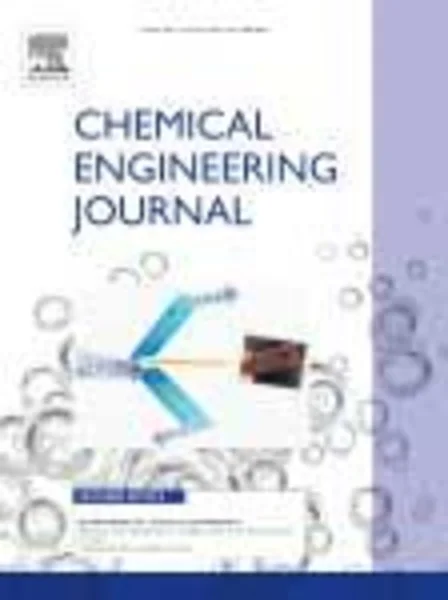-
synthesis and application of polyferric chloride–poly (epichlorohydrin–dimethylamine) composites using different crosslinkers
جزئیات بیشتر مقاله- تاریخ ارائه: 1392/01/01
- تاریخ انتشار در تی پی بین: 1392/01/01
- تعداد بازدید: 542
- تعداد پرسش و پاسخ ها: 0
- شماره تماس دبیرخانه رویداد: -
by the premixing of polyferric chloride (pfc) and poly-epichlorohydrin–dimethylamine (dam–ech), a novel composite material (pfc–dam–ech) was prepared and then utilized for the coagulation treatment of simulated reactive brilliant red dye wastewater in this study. the influence of oh/fe molar ratio (b value), fe to dam–ech mass ratio (mr value) and cross-linker type (ethylenediamine, diethylenetriamine, and triethylenetetramine denoted as edm, dtm and ttm, respectively) on color removal efficiency and zeta potential was extensively investigated as functions of flocculants dosage and dye wastewater ph. the decolorization performance and charge neutralization ability of composite pfc–dam–ech flocculant were studied in comparison with those achieved by single use of pfc and dam–ech. experimental results indicated that synergic effect of pfc and dam–ech improved the color removal efficiency and charge neutralization ability of composite pfc–dam–ech. at the conditions of lower b value, higher mr value and ttm as cross-linker, pfc–dam–ech provided higher decolorization effect and stronger charge neutralization effect. in addition, decolorization effect with the composite material is quite effective within the ph range of 6–7.5 for simulated dye wastewater treatment. furthermore, pfc–dam–ech is proved to be more suitable and effective for simulated reactive brilliant red dye wastewater treatment than conventional metal coagulants and organic polymers.
مقالات جدیدترین رویدادها
-
استفاده از تحلیل اهمیت-عملکرد در ارائه الگوی مدیریت خلاقیت سازمانی و ارائه راهکار جهت بهبود
-
بررسی تاثیر ارزش وجوه نقد مازاد بر ساختار سرمایه شرکت های پذیرفته شده در بورس اوراق بهادار تهران
-
بررسی تأثیر سطح افشای ریسک بر قرارداد بدهی شرکت های پذیرفته شده در بورس اوراق بهادار تهران
-
بررسی تأثیر رتبه بندی اعتباری مبتنی بر مدل امتیاز بازار نوظهور بر نقد شوندگی سهام با تأکید بر خصوصی سازی شرکت ها
-
تأثیر آمیخته بازاریابی پوشاک ایرانی بر تصویر ذهنی مشتری پوشاک ایرانی (هاکوپیان)
-
بررسی اثر پارامترهای سطوح مشترک بر رفتار دیوارهای حایل سنگ چین با استفاده از روش اجزا منفصل
-
اثرات کوتاه و طولانی مدت عصاره پرسیاوشان روی هموگلوبین، هماتوکریت، حجم گلبول های قرمز، زمان پروترومبین و زمان ترومبوپلاستین
-
بررسی جهش هاى نادر ژن بتاگلوبین در شمال غرب کشور
-
simulation of polycrystal deformation with grain and grain boundary effects
-
determination of mechanical properties of soft tissue scaffolds by atomic force microscopy nanoindentation
مقالات جدیدترین ژورنال ها
-
مدیریت و بررسی افسردگی دانش آموزان دختر مقطع متوسطه دوم در دروان کرونا در شهرستان دزفول
-
مدیریت و بررسی خرد سیاسی در اندیشه ی فردوسی در ادب ایران
-
واکاوی و مدیریت توصیفی قلمدان(جاکلیدی)ضریح در موزه آستان قدس رضوی
-
بررسی تاثیر خلاقیت، دانش و انگیزه کارکنان بر پیشنهادات نوآورانه کارکنان ( مورد مطالعه: هتل های 3 و 4 ستاره استان کرمان)
-
بررسی تاثیر کیفیت سیستم های اطلاعاتی بر تصمیم گیری موفق در شرکتهای تولیدی استان اصفهان (مورد مطالعه: مدیران شرکتهای تولیدی استان اصفهان)
-
نقش حسابداری مدیریت استراتژیک در عملکرد سازمانی (مطالعه موردی : هتل های 5 ستاره شهر تهران)
-
طراحی الگوی سقف شیشه ای با رویکرد نظریه داده بنیاد
-
بررسی عوامل موثر مدل سازی فرآیندهای کسب و کار(bpm) در قالب چارچوب itil جهت ارتقای هوش تجاری (bi) در سازمان تامین اجتماعی تهران
-
نقش ویژگی های کمیته حسابرسی بر رابطه بین انطباق مالیاتی و هموارسازی سود
-
بررسی ارتباط بین ضعف کنترل های داخلی و همزمانی قیمت سهام در شرکت های پذیرفته شده در بورس اوراق بهادار تهران: تبیین نقش تعدیلگر ویژگی های هیئت مدیره




سوال خود را در مورد این مقاله مطرح نمایید :